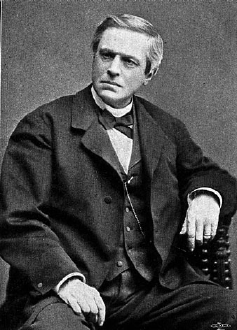Sven Ludvig Lovén facts for kids
Quick facts for kids
Sven Ludvig Lovén
|
|
|---|---|
 |
|
| Born | 6 January 1809 |
| Died | 3 September 1895 (aged 86) Solna parish, Sweden
|
| Nationality | Swedish |
| Alma mater | Lund University |
| Scientific career | |
| Fields | marine zoologist malacologist |
| Institutions | Stockholm University |
Sven Ludvig Lovén (born January 6, 1809 – died September 3, 1895) was a Swedish scientist. He was a marine zoologist, which means he studied animals that live in the ocean. He was also a malacologist, meaning he specialized in studying mollusks like snails, clams, and octopuses. A special research center, the Sven Lovén Centre for Marine Sciences, is named after him. It is part of the University of Gothenburg in Sweden.
Contents
About Sven Lovén's Life
Early Life and Education
Sven Lovén was born in Stockholm, Sweden. He started studying at Uppsala University in 1823. The next year, in 1824, he moved to Lund University. He worked hard and finished his studies in 1829, earning an advanced degree.
Soon after, in 1830, he became a professor at Lund University. He focused on zoology, which is the study of animals.
Learning in Berlin
From 1830 to 1831, Lovén traveled to Berlin, Germany. There, he learned about anatomy (the study of how bodies are built) and how to use microscopes. He studied with famous scientists named Christian Gottfried Ehrenberg and Karl Rudolphi at Humboldt University of Berlin.
Exploring and Discovering
In the early 1830s, Lovén went on scientific trips along the west coast of Sweden. He was always looking for new things to learn about marine life.
Later, from 1836 to 1837, he explored even further. He traveled to Finnmark in northern Norway and to Spitsbergen, which is a group of islands far north in the Arctic Ocean. These trips helped him discover many new species of ocean animals.
Working at the Museum
In 1840, Sven Lovén was chosen to be a member of the Swedish Royal Academy of Sciences. This was a great honor for a scientist.
In 1841, he became a professor and a curator at the Swedish Museum of Natural History. He was in charge of the department that studied animals without backbones, like jellyfish and worms. He kept this important job until 1892. He also taught natural history at Stockholm University.
From 1870 to 1892, Lovén spent most of his time studying echinoderms. These are sea creatures like starfish, sea cucumbers, and especially sea urchins. He learned a lot about them.
In 1877, Lovén started a special place called Kristinebergs Marine Research Station. It was built in Fiskebäckskil, a town on an island in Sweden. This station helped scientists study ocean life right by the sea.
How Sven Lovén Was Honored
Sven Lovén was recognized by many important scientific groups around the world.
- In 1871, he became a member of the Bavarian Academy of Sciences and Humanities in Germany.
- In 1872, he became a member of the French Academy of Sciences in France.
- In 1875, he joined the Prussian Academy of Sciences, also in Germany.
- In 1881, he was made an honorary member of the Royal Society of Edinburgh in Scotland.
- In 1885, he became a foreign member of the Royal Society of London in England.
- In 1886, he was welcomed into the Göttingen Academy of Sciences and Humanities in Germany.
In 1909, after his death, the Royal Academy of Sciences created the Sven Lovén Memorial Fund. This fund gives out a special award called the Lovén Medal (Lovénska medaljen) to honor scientists.
Many places in Svalbard, an Arctic area, are named after him to remember his work. These include:
- A headland called Kapp Lovén
- A mountain called Lovénberget
- A lake called Lovénvatnet
- Glaciers called Lovénbreane

